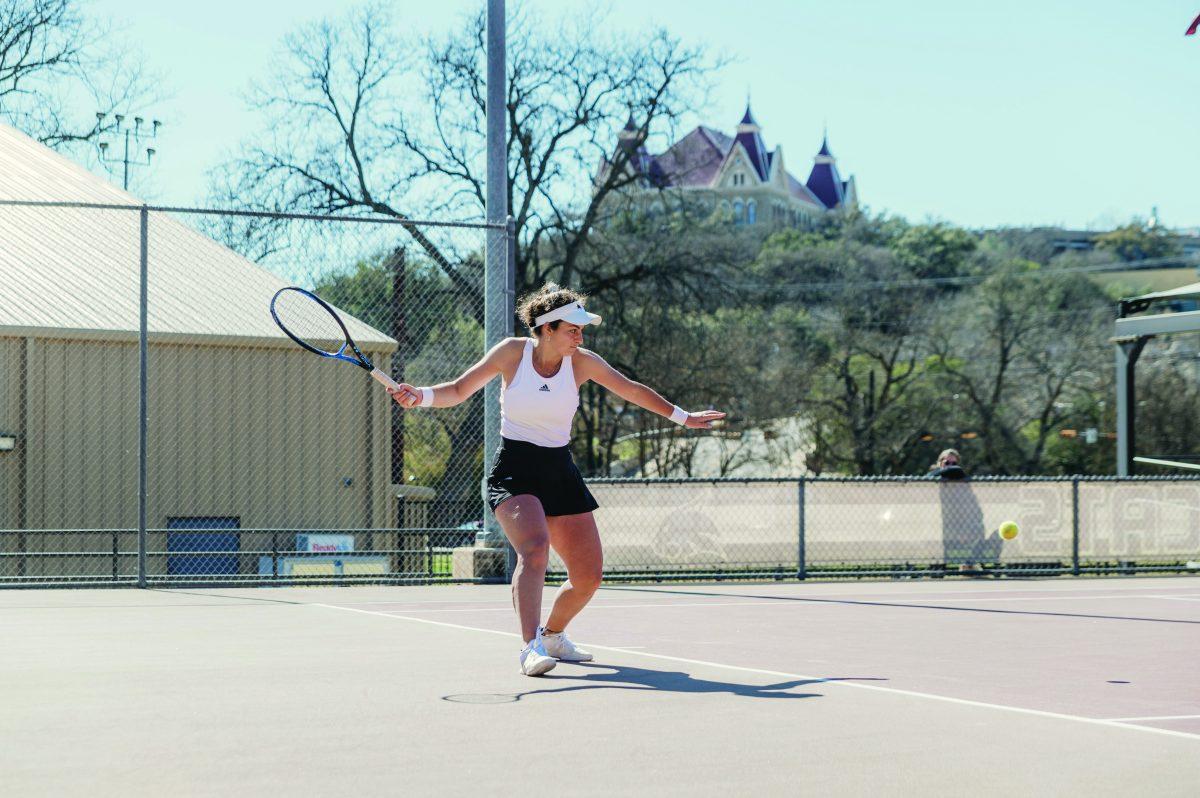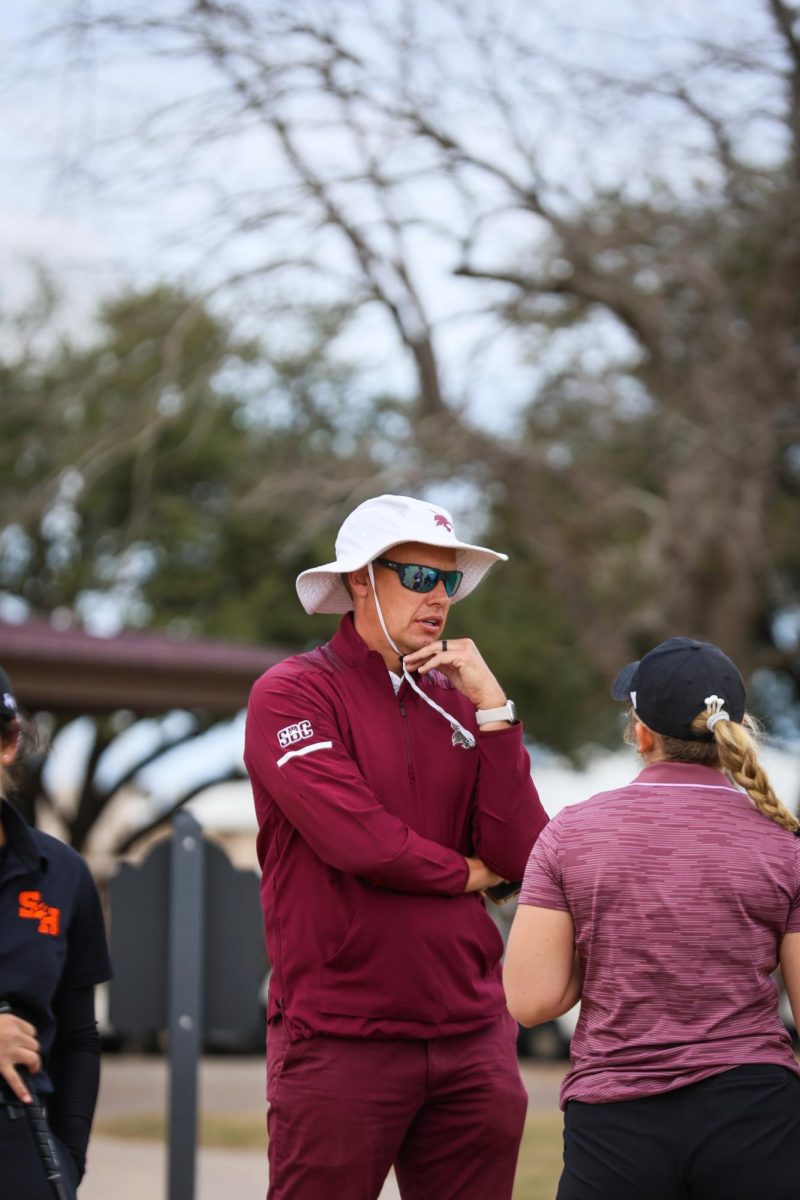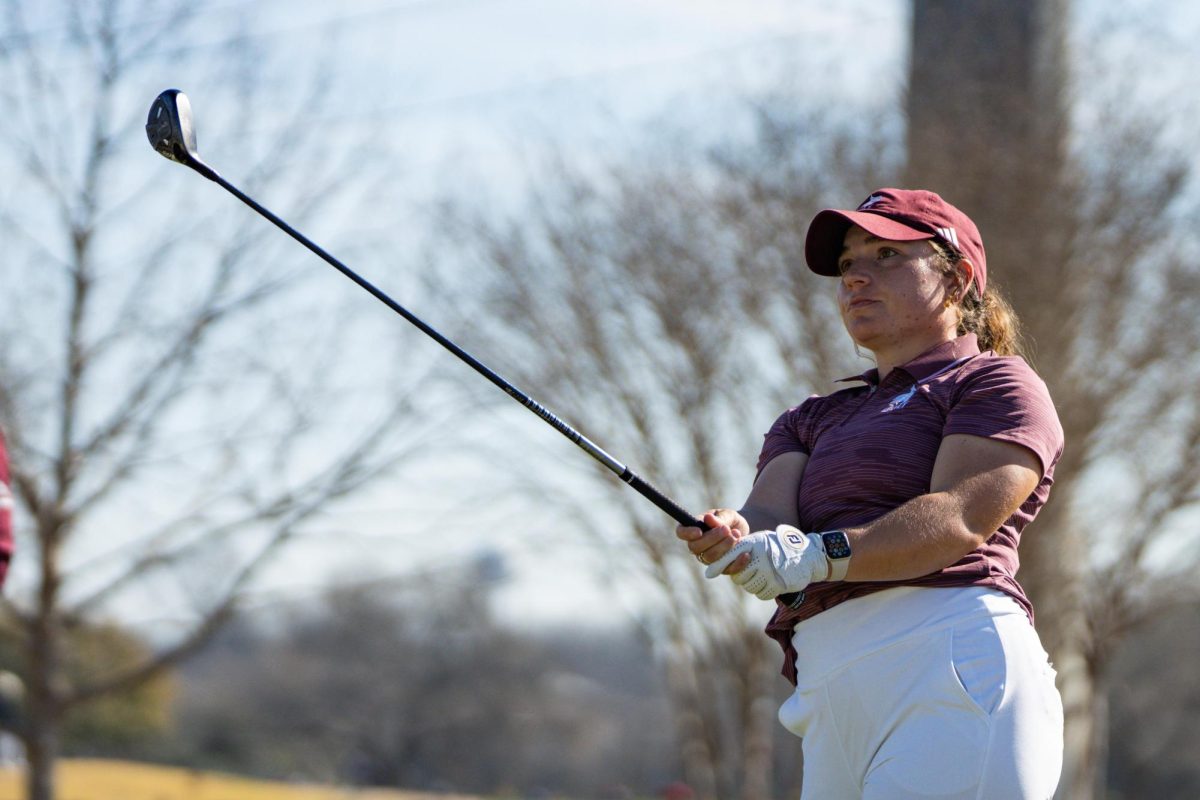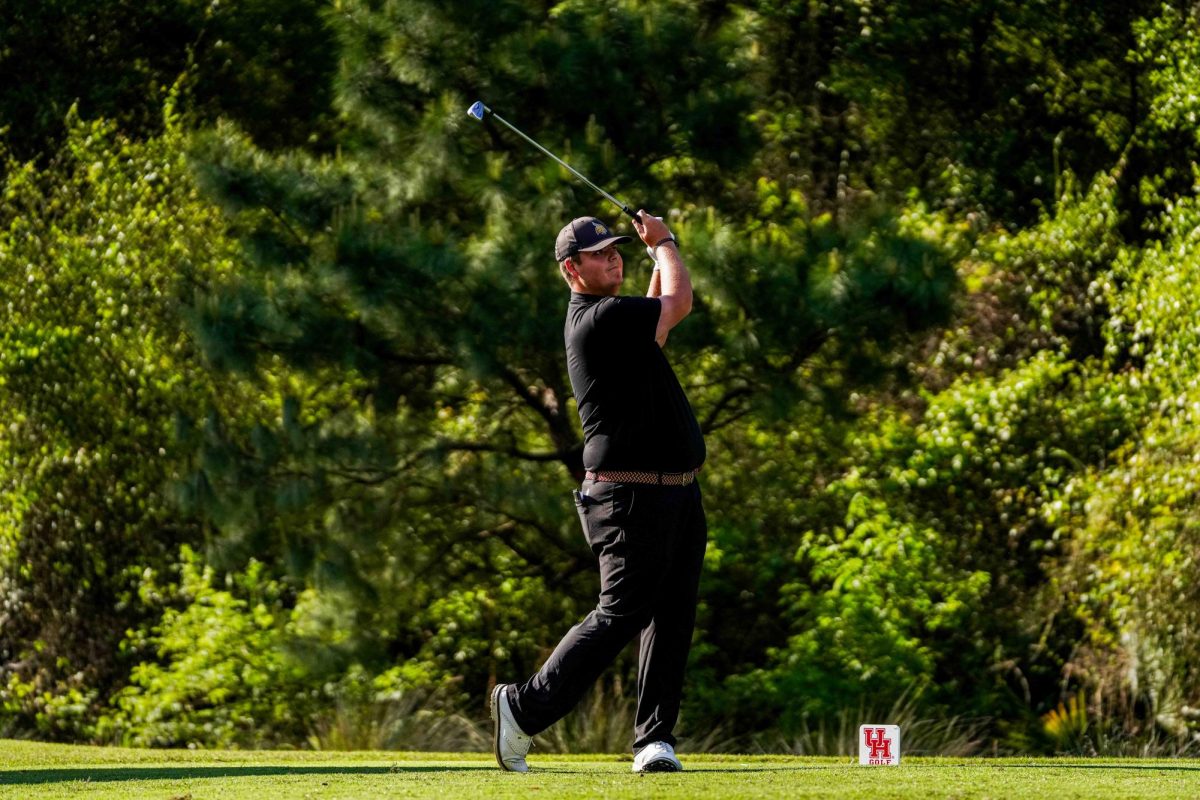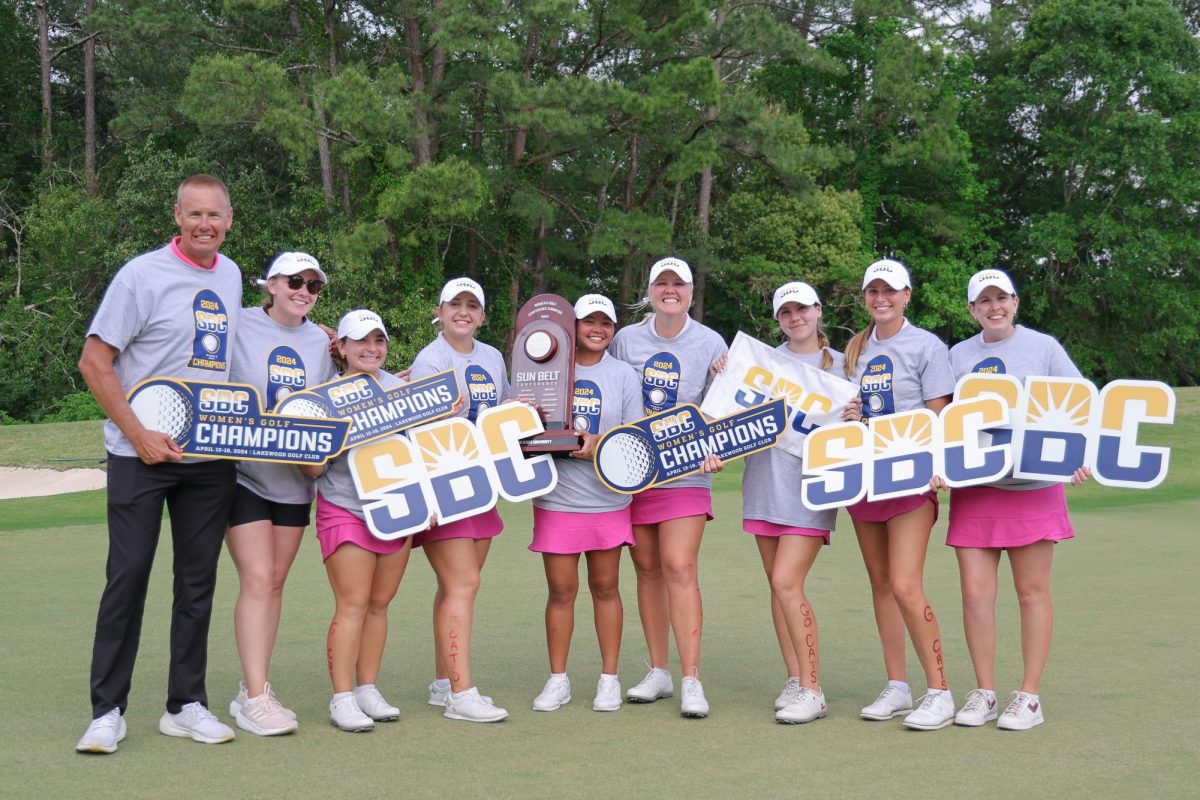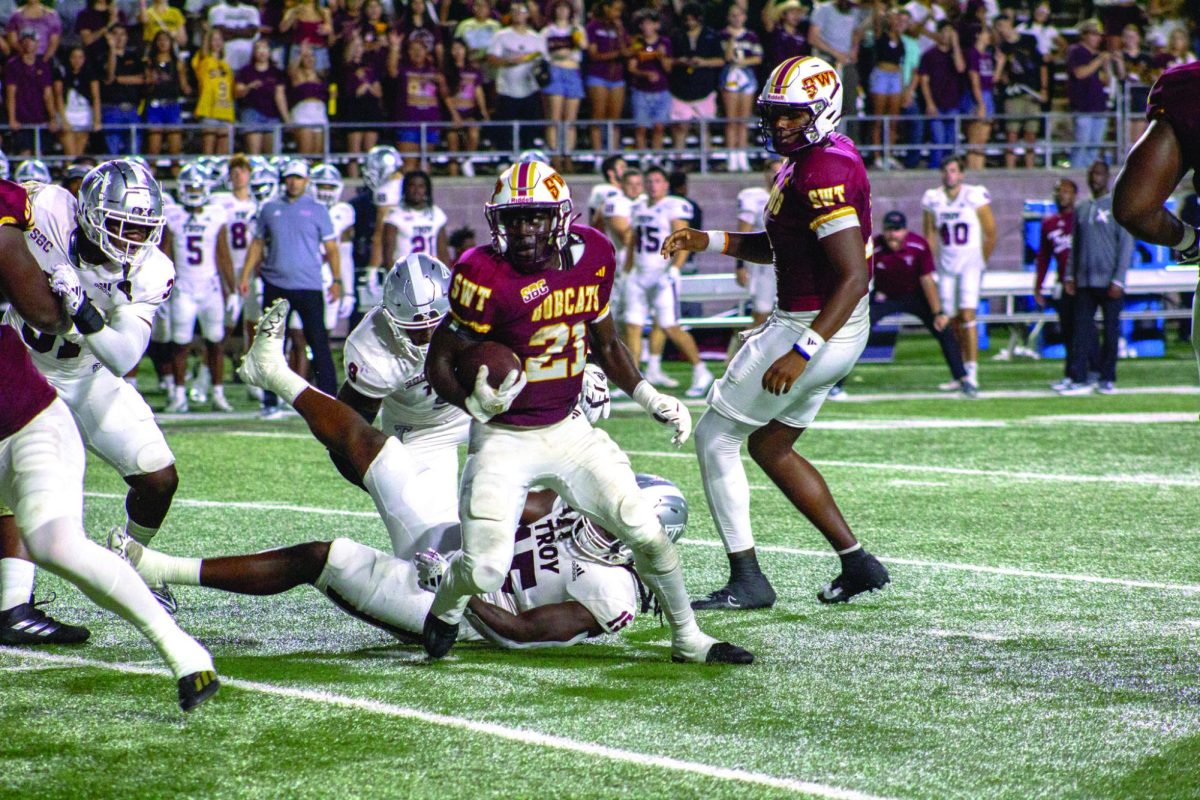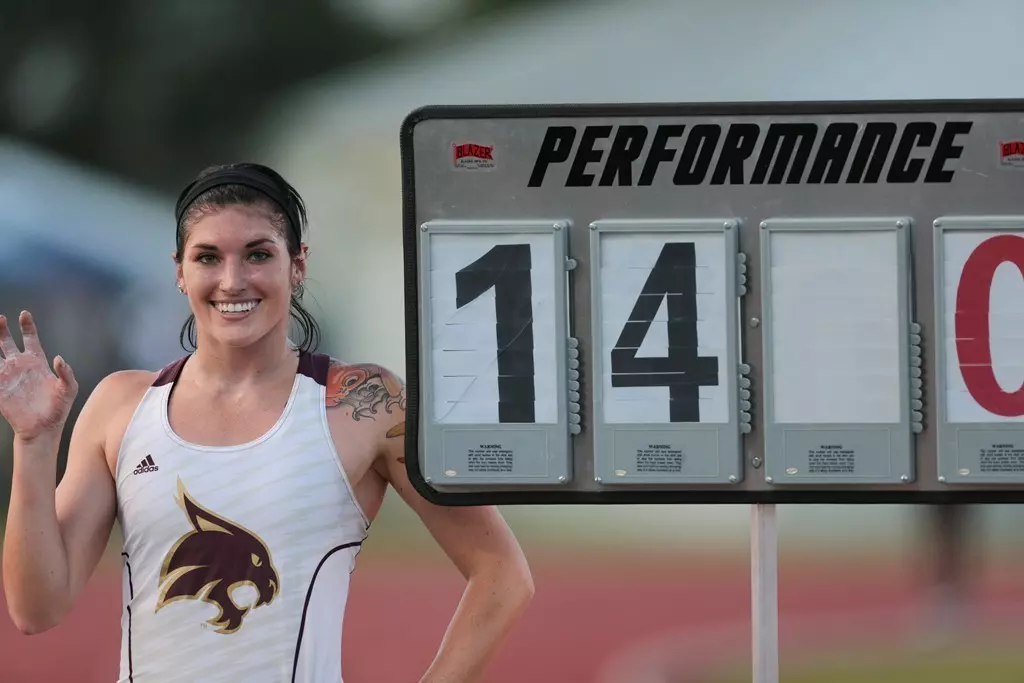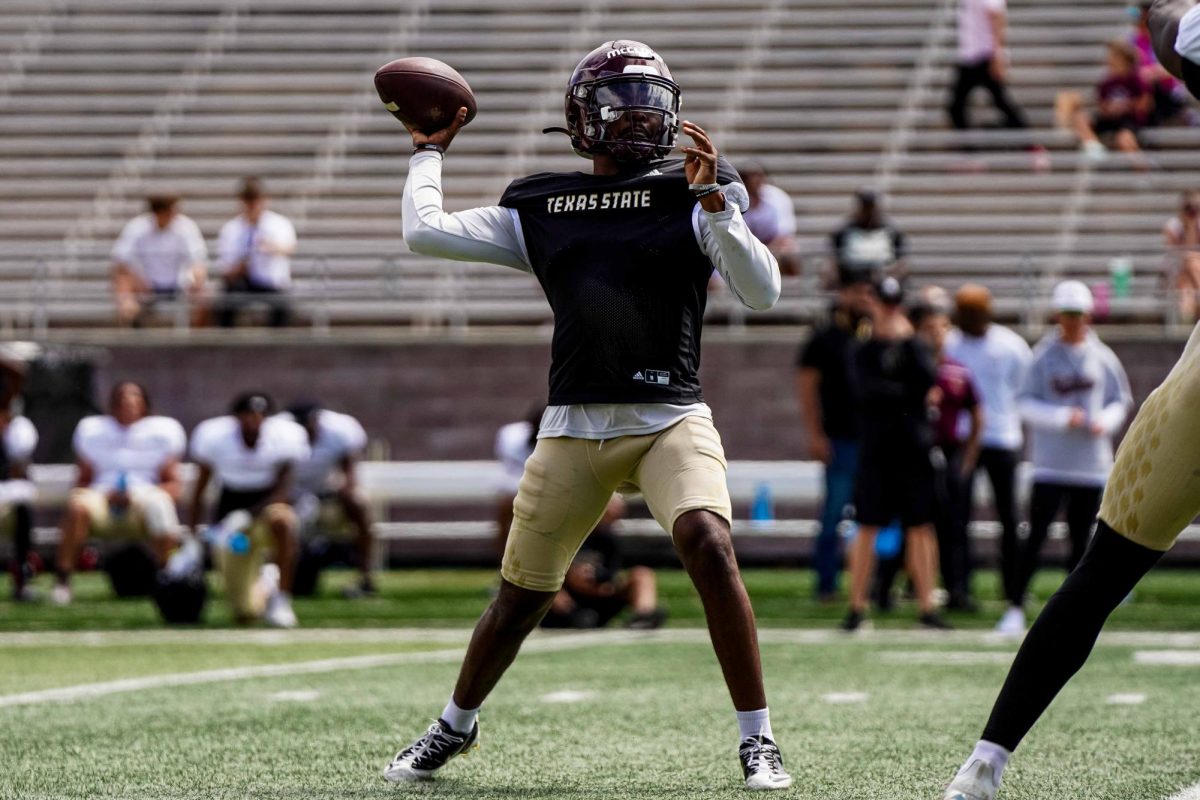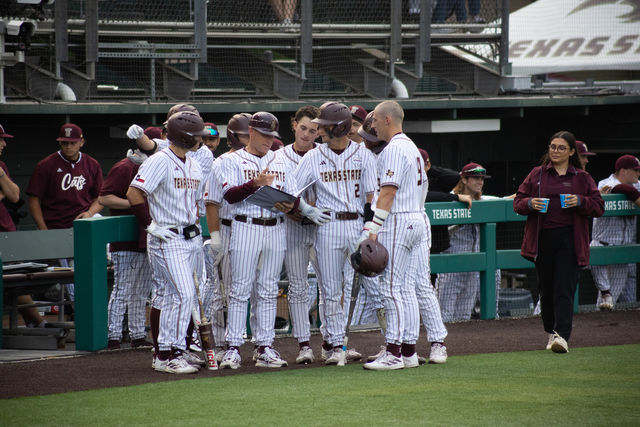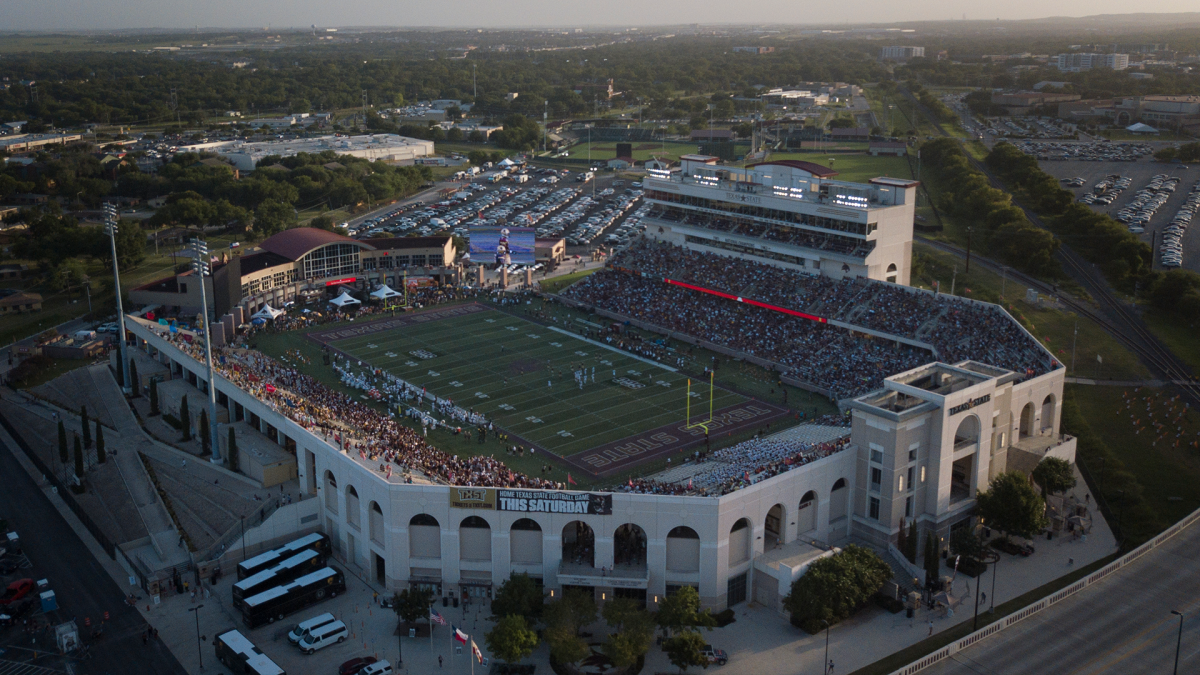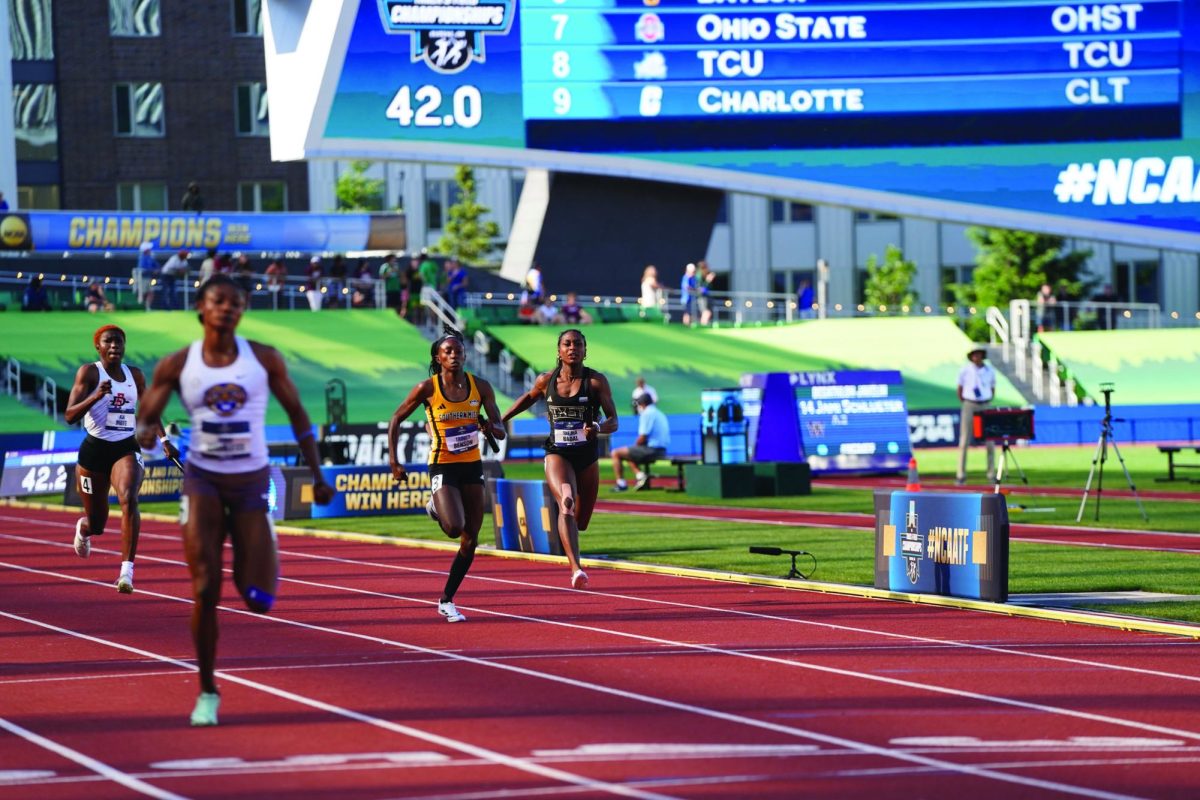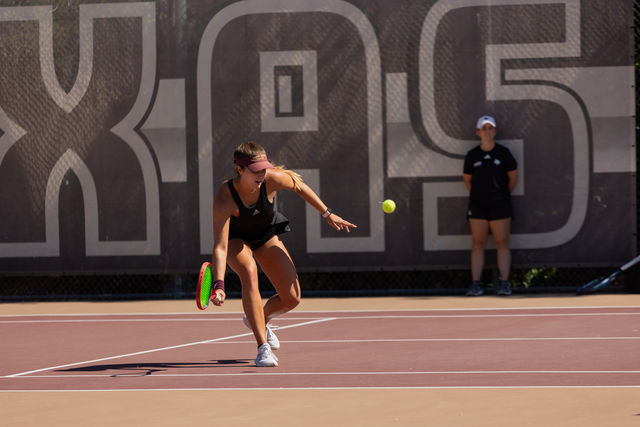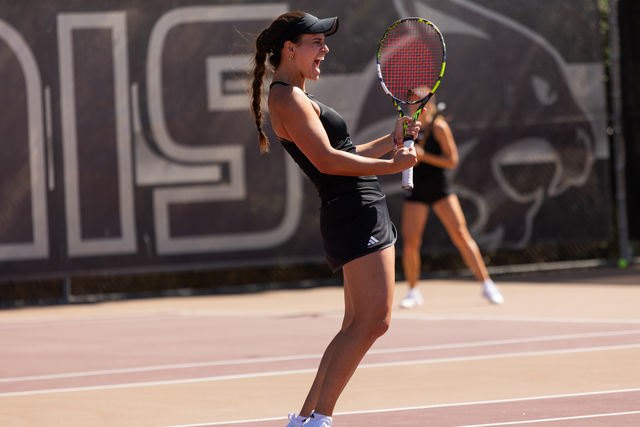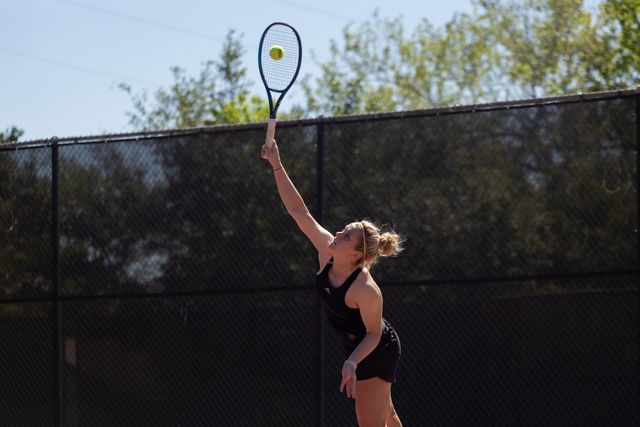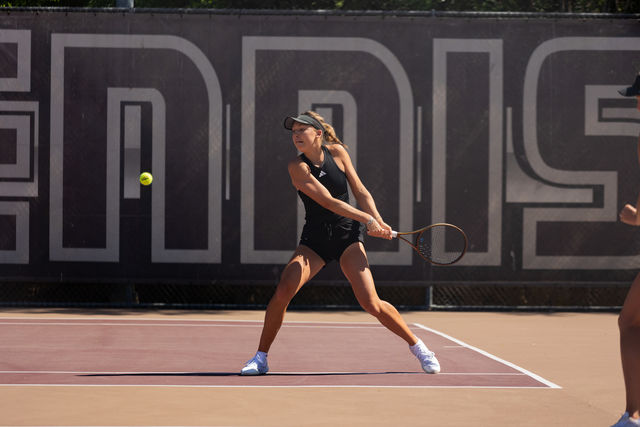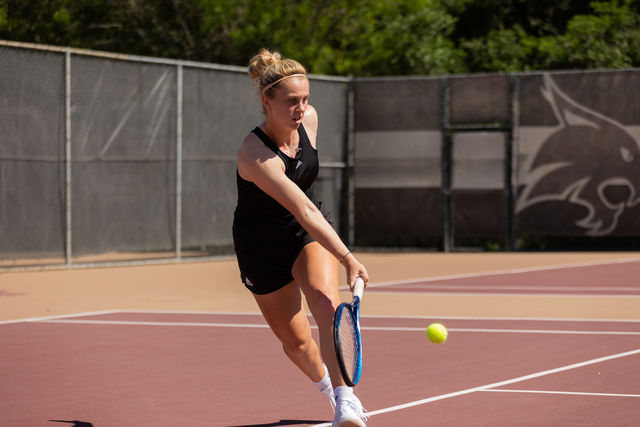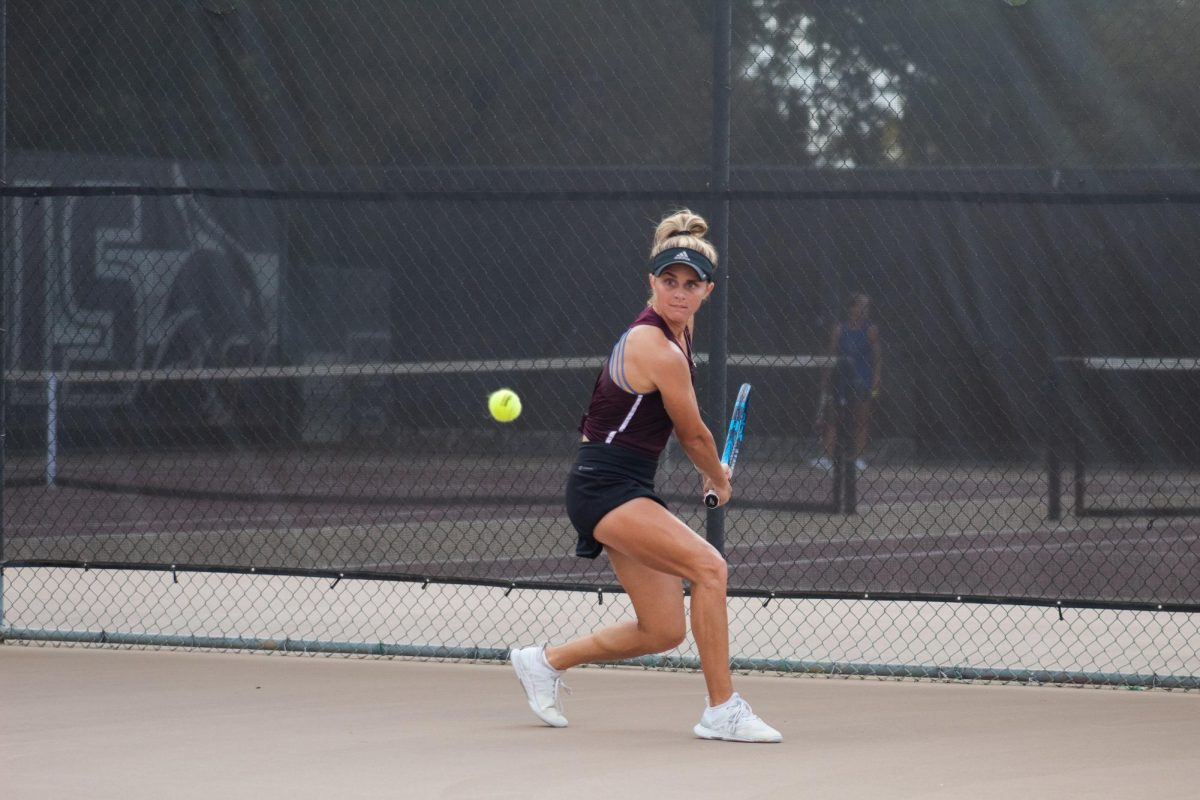From San Marcos to Sweden to South America, the process of recruiting student-athletes by Texas State Athletics has no bounds. There are currently more than 21,000 student-athletes from foreign countries who compete in various sports across the NCAA and 26 of them play at Texas State.
According to Kelsey Solis, the associate athletic director for compliance, certain sports at the university have been recruiting internationally for the last 20 years.
“Particularly tennis and golf have always recruited heavy internationally,” Solis said. “There’s obviously a talent pool abroad, so I would say for at least the last two decades they have recruited internationally.”
The sports with the highest number of international student-athletes are golf, tennis, and track and field. Solis said that the international recruiting process at Texas State varies on the sport and coach.
“It really just depends on the specific coaches and what their connections are,” Solis said. “Our women’s golf coach is from Sweden… he’s an international golfer himself so he has a lot of connections already there.”
Two of the 10 student-athletes on the women’s golf team, Matilda Cederholm and Federica Tavelli-Westerlund, are also from Sweden.
A connection with the head coach is not every international student-athlete’s reason for playing at Texas State. The path Texas State redshirt senior tennis player Kate Malazonia took to become an NCAA student-athlete was different.
Malazonia was born in Georgia, a country located in Eastern Europe, and spent most of her life living in England, where she was first introduced to the sport of tennis at a young age.
As a teenager, Malazonia signed with a recruiting service that specializes in helping tennis players connect with NCAA coaches.
“I sighed with Sarah Borwell. She has a lot of contacts because she used to play college tennis herself, and she basically set up a company, Tennis Smart, where she matches players and coaches,” Malazonia said. “I signed with her and she sent out my tennis resume videos of me playing, my results, and coaches that were interested reached out to me.”
Malazonia eventually chose to commit to current Texas State women’s tennis head coach Kendall Brooks when she held the same position at St. Edwards University. After graduating from St. Edwards, Malazonia decided to transfer and continue her playing career while earning her master’s in business administration at Texas State after Brooks became the new women’s tennis head coach.
Texas State junior golfer Junia Gabasa also had an interesting journey to Texas State which began back in her native country of the Philippines by wanting to follow in the footsteps of her sister, who was also a collegiate golfer at Vanderbilt University.
“My dad played [golf] and he got my sister into it. I saw her go to college to play golf and I wanted to do that as well, so I just started practicing,” Gabasa said.
According to Gabasa, her recruitment mostly consisted of traveling to the U.S. during the summer to play in tournaments as well as emailing college coaches in hopes of catching their attention.
During her final summer before leaving for college, Gabasa visited Texas State and knew it was the school she wanted to attend.
“After I visited and saw the potential of our team and the coaches, I really love the area. It’s a pretty big school with good support for athletics,” Gabasa said.
Malazonia also spoke on some of the difficulties she has faced being an international student-athlete compared to the challenges of American-born student-athletes.
“Honestly the first thing I can think of is moving,” Malazonia said. “I envy the kids that get their parents’ trucks here and they help move their stuff, find an apartment, a car. I had to work that out all on my own. I had to find a storage unit. I didn’t have a car so I had to figure out how to get to the storage unit. I had to buy my own furniture. With rent, I don’t have a guarantor who lives in this country so I have to pay three months of rent in advance.”
According to Solis, Texas State Athletics ensures its international student-athletes have a strong support system from the moment they step foot on campus.
“Our [Texas State] international students, while they may have family support, it’s back home, so we make sure those coaches, tennis and golf and track become their families,” Solis said. “We also work really well with our international office on campus to try and connect them with other students from their country, and that familiarity is comforting for them. Try to help them make the connection and feel like they belong.”
Solis said she expects the number of student-athletes being recruited from overseas by Texas State to gradually increase in the coming years.
“We definitely encourage our coaches to recruit in Texas but because of the connections that our coaches have abroad that’s just a natural space for us to live in so long-term the goal is recruiting international athletes,” Solis said.
International players, athletics reflect on recruitment process
February 21, 2023
Senior Kate Malazonia hits the ball in a match against University of Texas Rio Grande Valley, Feb. 18, 2023, at Bobcat Tennis Complex.
Donate to The University Star
Your donation will support the student journalists of Texas State University. Your contribution will allow us to purchase equipment and cover our annual website hosting costs.











